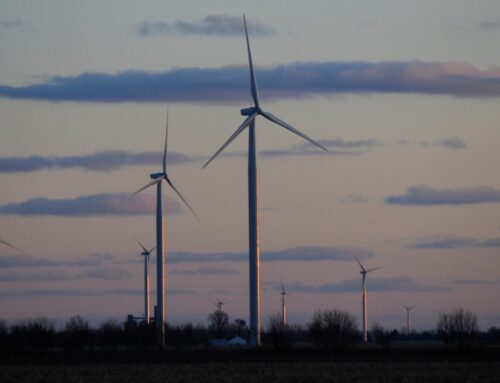What Indonesia’s Floating Solar Project can teach Colombia about a clean energy future | T
May 26, 2025

As the global race toward net-zero emissions accelerates, Indonesia’s landmark floating solar power plant on the Cirata Reservoir is illuminating a path forward for countries across Latin America – especially Colombia – where fractured geography, a post-conflict recovery, and social inequality pose challenges to energy access, food security, and climate resilience.
Inaugurated in late 2023 with a project cost of US$145 million, the Cirata Floating Photovoltaic (FPV) Project is Southeast Asia’s largest floating solar facility. The 192-megawatt plant – developed through a partnership between UAE-based renewable energy developer Masdar and Indonesia’s state-owned electricity utility PLN – now feeds 300,000 megawatt-hours annually into Indonesia’s national grid, enough to power 50,000 homes. Built on a 250-hectare reservoir with stunning views of the West Java mountain range, Cirata hydroelectric complex stands as a technical and political milestone in the country’s path to reach net-zero emissions by 2060.
Colombia, which has similarly pledged carbon neutrality by 2050, shares many of the environmental and developmental features that make the Indonesian model relevant: mountainous terrain, agricultural lowlands for staple food harvesting, tropical forests home to abundant biodiversity, and vast untapped water surfaces. But Colombia also faces a post-conflict reality where delivering reliable energy to remote, off-the-grid rural areas is crucial not only for economic development but also for peacebuilding and bridging income equality.
“Energy security is not just about powering households – it’s the foundation for agricultural productivity, local enterprise, and food sovereignty” claims a spokesperson from PLN. “Floating solar technology can help transform conflict-affected regions into self-sustaining zones by powering irrigation systems, refrigeration for perishable goods, and local food processing.”
In departments such as Caquetá, Guaviare, and Putumayo – where rivers meander through dense jungle and road access is limited – floating solar arrays on reservoirs or managed wetlands could provide a decentralized, climate-friendly energy supply to both homes and farms. This would reduce dependence on costly diesel generators and connect producers to markets with better storage, transport, and processing capacity.
The Cirata project with its 13 floating islands also showcases how infrastructure innovation can overcome complex geographical challenges. Engineers from PowerChina, the firm contracted to build the plant, designed a specialized anchoring system using metal shear keys and concrete counterweights to stabilize the floating panels against high winds and uneven underwater terrain.
Each solar island, measuring 10 hectares was tested through wind tunnel modeling and computational simulations and could be directly applicable to Colombia’s rugged Andean and Amazonian basins – where water bodies are often surrounded by steep or unstable slopes.
The potential for technology exchanges between Indonesia and Colombia is significant, particularly as both countries look to deepen Equatorial Belt cooperation and trade ties, ties that would positively benefit two other economic tigers in the hemisphere – Malaysia and Singapore.
As a founding member of the Pacific Alliance – a trade bloc that includes Chile, Mexico, and Peru – Colombia is exploring new linkages across the Pacific with Southeast Asian economies. Energy innovation, alongside agriculture and green infrastructure, could become a pillar of multilateral cooperation under emerging frameworks like the ASEAN-Pacific Alliance Action Plan.
“We must think of the energy transition as a shared regional agenda, not just a national one,” states Indonesia’s Ministry of Foreign Affairs. “Technology transfer, climate finance, and trade connectivity are ways we can learn from each other and scale solutions like floating solar.”
Indonesia and South America are also exploring stronger diplomatic ties through free trade agreements, academic exchanges, and investment forums aimed at renewable energy and environmental sustainability. Both regions are vulnerable to climate-related disasters – flooding, drought, sea level rise – and both possess biodiversity hotspots that demand an integrated approach to development.
The success of Cirata proves that large-scale clean energy infrastructure can be achieved in topographically complex nations with strong public-private partnerships. The $100 million investment was made viable through collaboration between Masdar, PowerChina, and the Indonesian government – a model Colombia could emulate as it accelerates its clean energy transition.
Floating solar parks in Colombia could also complement existing hydroelectric facilities- some of which are facing reduced capacity due to changing rainfall patterns. Hybrid systems that combine hydro and solar, like in Cirata, increase energy stability and reduce evaporation from reservoirs, enhancing overall efficiency.
Crucially, the deployment of such infrastructure in rural and former conflict zones reinforces social cohesion and post-conflict reconciliation efforts. Colombia’s Truth Commission has identified inequality in access to basic services, including electricity, as a key driver of the internal conflict. Closing this gap through non-extractive energy sources can transform isolated communities into hubs of food production and ecological leadership.
Indonesia’s floating solar breakthrough is not just a startling feat of engineering – it is a signal to South America that good governance, sustainable innovation and cooperation can redefine what’s possible in the clean energy transition. For Colombia and its closest allies, embracing such solutions could illuminate the way to a more equitable, climate-resilient, and food-secure future- one powered by the sun and floating on water.
This article was made possible thanks to an invitation from Indonesia’s Ministry of Foreign Affairs.

Search
RECENT PRESS RELEASES
Related Post




